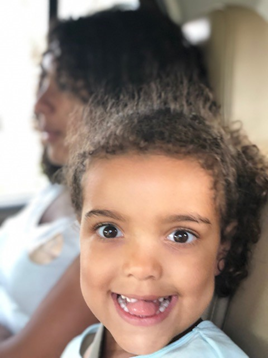By Kerry Ann Rockquemore and Tracey Laszloffy
As shown in the 2000 U.S.A Census, the population of those people identifying themselves as mixed race is on the increase; however, most communities, schools and social support organisations lack a definitive or clear understanding of the unique and often challenging experiences, pressures and needs of the mixed race youth of the country.

 he book focuses on mixed-race people who are bi-racially black and white to the exclusion of the myriad of other mixed race combinations that grace our world. Drawing on their experiences as family therapists coupled with extensive research on identity development and racial socialization, Rockquemore and Laszloffy discuss the fascinating evolution of racial identity and what it means for mixed-race people, tracing it from the One-drop rule* to the current thoughts on “blended identity”. While the authors acknowledge steady (though slow) progress in the politics of racial identity, they find current clinical models and scholarly mindset of racial identity development, lacking in addressing the reality of living the mixed-race experience. Earlier theories on racial identity stressed the linear stages which lead to a one-size-fits-all identification as biracial. However, Rockquemore and Laszloffy suggest that healthy racial growth comes through many pathways and involves a broad range of possible identities that fall along a “Continuum of Biracial Identity” (COBI).
he book focuses on mixed-race people who are bi-racially black and white to the exclusion of the myriad of other mixed race combinations that grace our world. Drawing on their experiences as family therapists coupled with extensive research on identity development and racial socialization, Rockquemore and Laszloffy discuss the fascinating evolution of racial identity and what it means for mixed-race people, tracing it from the One-drop rule* to the current thoughts on “blended identity”. While the authors acknowledge steady (though slow) progress in the politics of racial identity, they find current clinical models and scholarly mindset of racial identity development, lacking in addressing the reality of living the mixed-race experience. Earlier theories on racial identity stressed the linear stages which lead to a one-size-fits-all identification as biracial. However, Rockquemore and Laszloffy suggest that healthy racial growth comes through many pathways and involves a broad range of possible identities that fall along a “Continuum of Biracial Identity” (COBI).
The COBI model “defines and describes multiple points of identity along a Black-White continuum”, including single Black or White, mixed with a Black or White bias, and also blended biracial. They argue that no single identity is better than any other in the model and contend that healthy and happy racial growth and development much is less about where a person arrived in their self-identification journey, than about the path taken to get there. They propose that the ideal path to one’s racial identity should be “shaped by cognitive and emotional acceptance of the fact of having one white and one black parent.”

Whilst the book has educational value and does raise a number of issues that many readers can relate to and disagree with (or agree if you do). The selection to limit the focus to solely black and white mixed-race people gave an impression of a limited scope, even though the authors acknowledge the broad scope of variations, or “everything in between”. The suggestion that parents can explain away racial taunts, preventing any self-esteem issues harks forward to the Herd Defence for the Corona Virus, being that if you get exposed and survive, you will become immune. I challenge any parent to comfortably and wilfully expose their child to either for their wellbeing. More input and direct quotations from people occupying various points on the COBI range would have been a welcome contribution, particularly in light of the aforementioned narrow focus.Overall, Rockquemore and Laszloffy propose that creating a healthy developmental pathway requires honest, early, open, and continual communication about race with biracial children. Whilst current research shows that these discussions are a taking place in families of colour, they are mostly absent in biracial families.

These perceived criticisms or observations however prompted more thought about the issues faced as opposed to being spoon fed a silver bullet to address the issues facing mixed race people today.
Raising Biracial Children focuses on the varied concerns of mixed-race black and white children in the U.S.A. Many readers will find the book thought provoking, even if they do not agree with all they read.
*The one-drop rule is a social and legal principle of racial classification that was prominent in the U.S. in the 20th century. It asserted that any person with even one ancestor of sub-Saharan African heritage (“one drop” of black blood) is considered black.
